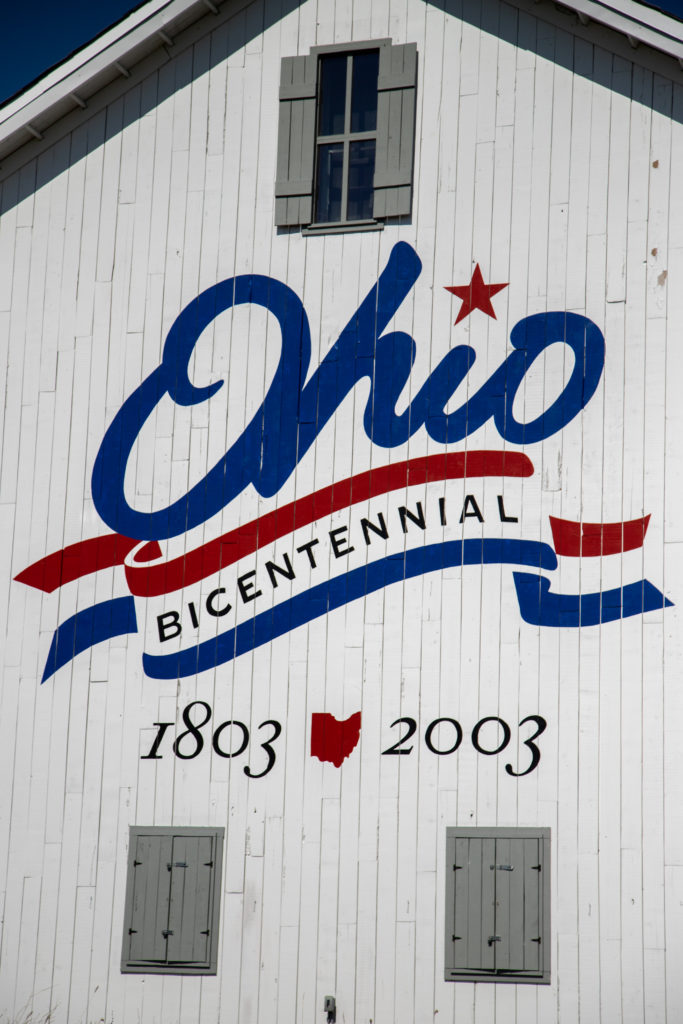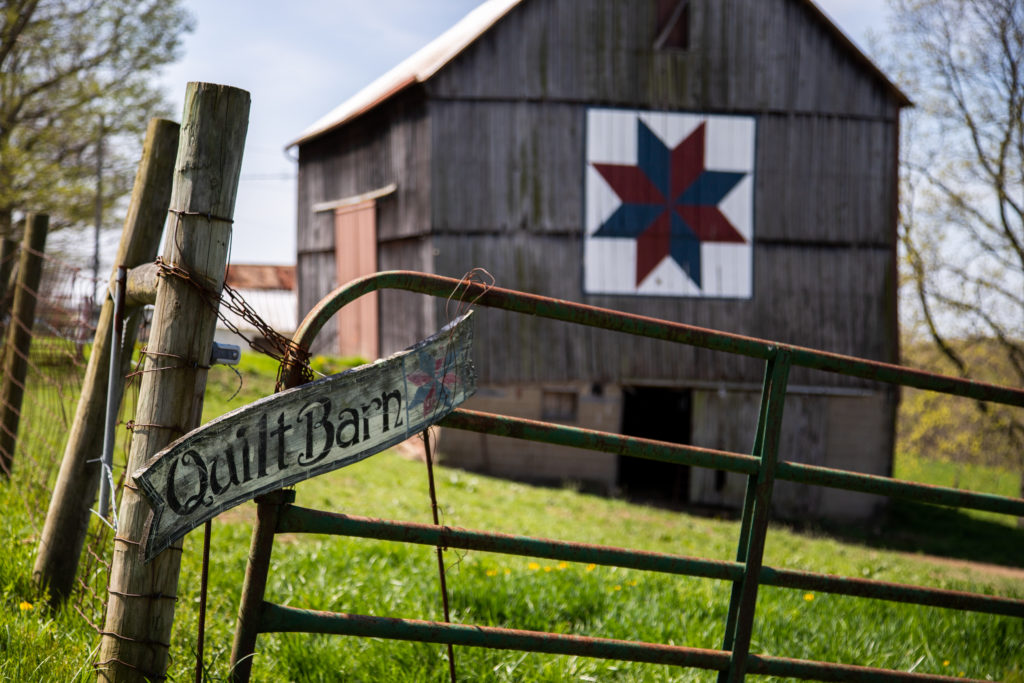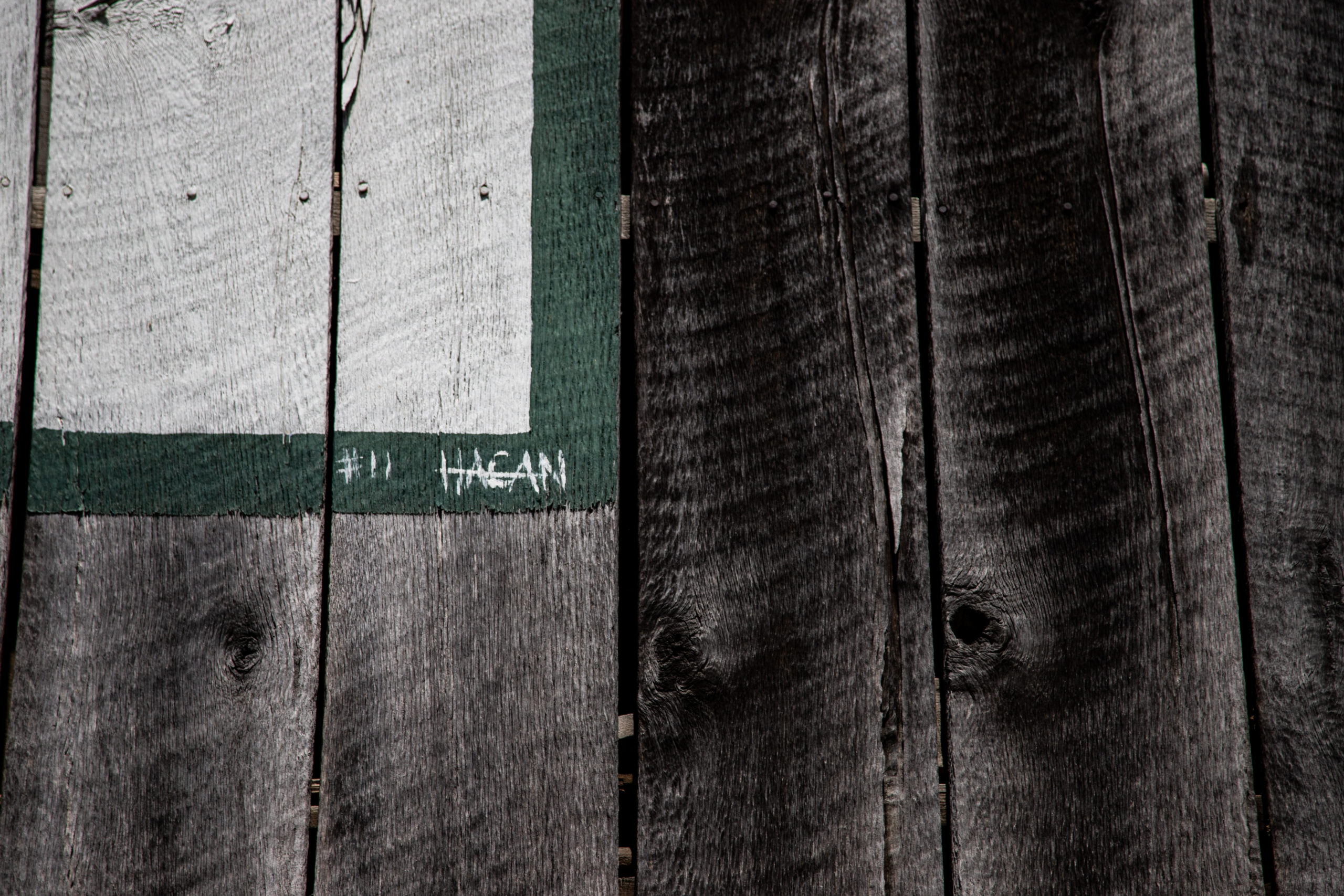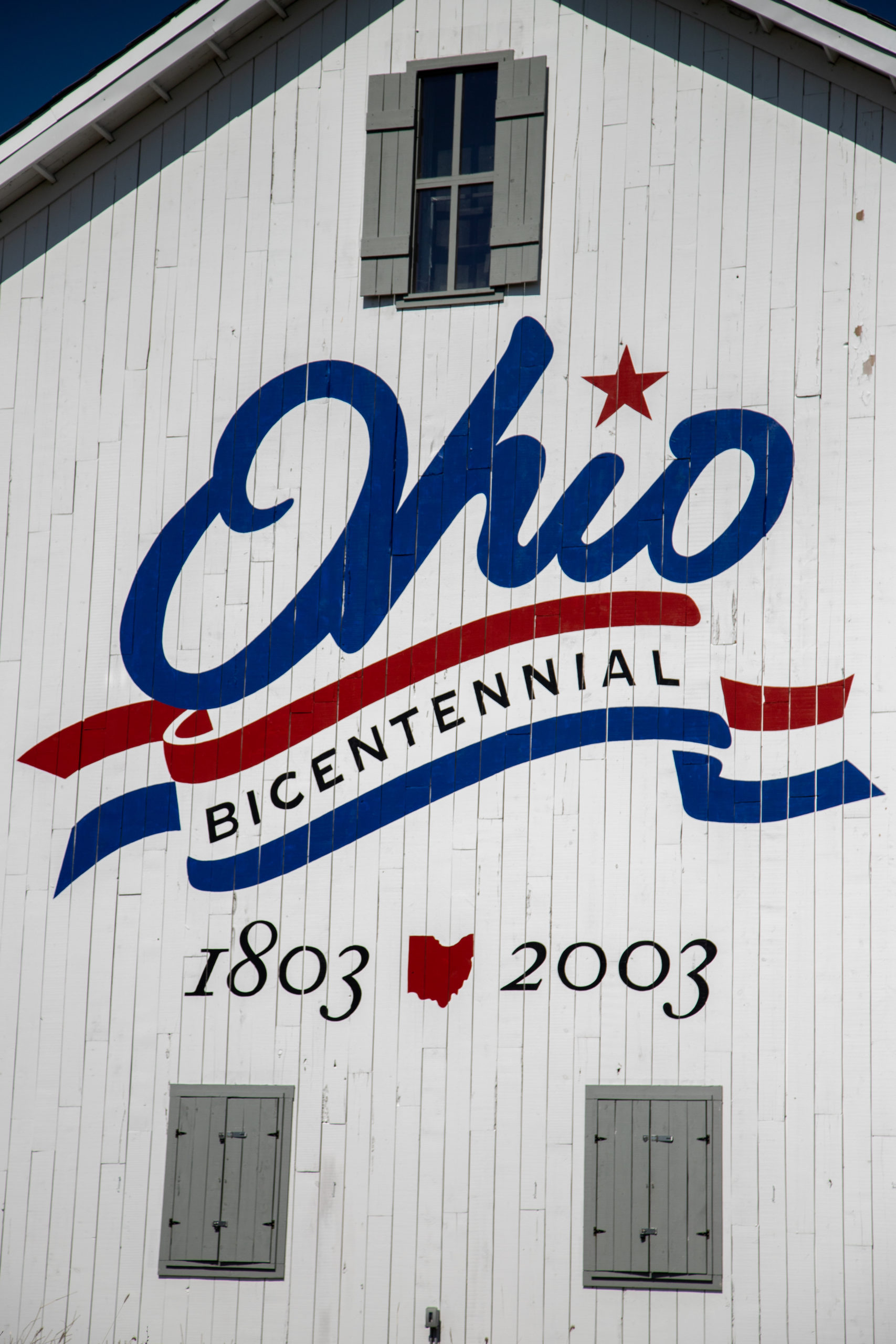
The Barn Artist
At 46 years old, Hagan’s barn artistry has evolved into a career with a nationwide portfolio. His work has a way of rejuvenating the surrounding environment, whether it be a high school gym or a wood barn.
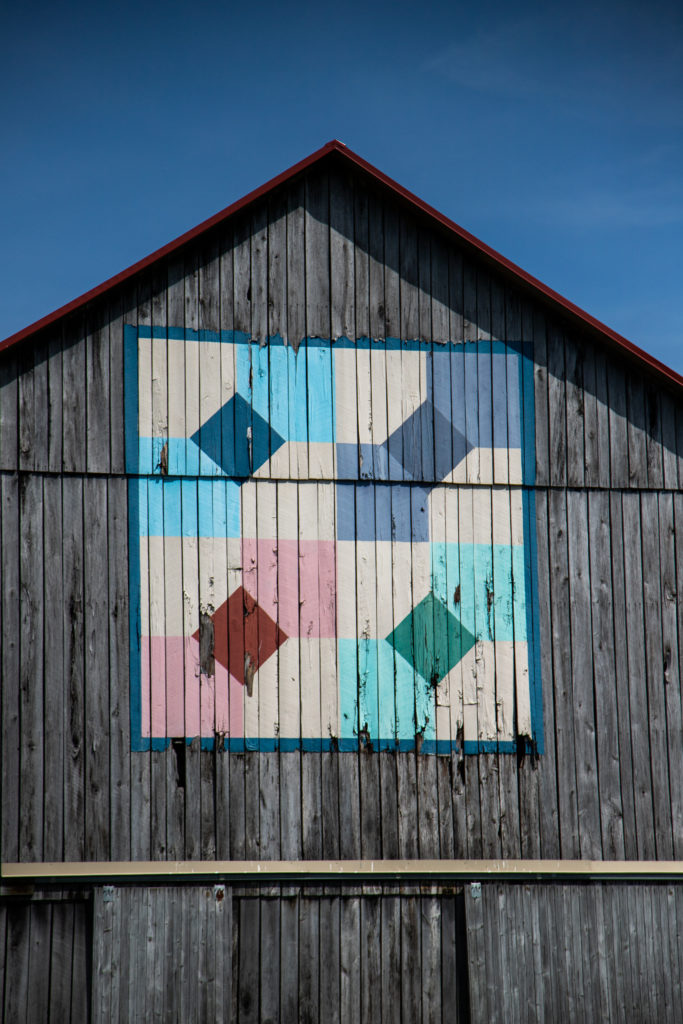
Scott Hagan preserves history through murals
For artist Scott Hagan, barns are another available canvas.
Having grown up drawing, Hagan took on painting during high school. At age 19, he decided he wanted more of a challenge.
“I just was starting to figure out that I liked painting things that were on the bigger scale,” Hagan says. “The biggest thing I could find to challenge myself was the side of [my] dad’s barn there.”
Now, he is known as “Barn Artist.”
“I didn’t want to be ‘The Barn Painter’ because that was Harley Warrick,” he says, referencing the American barn painter responsible for the Mail Pouch tobacco advertising on barns throughout the midwest. “I felt like I was more than a ‘barn painter;’ I was a barn artist.”
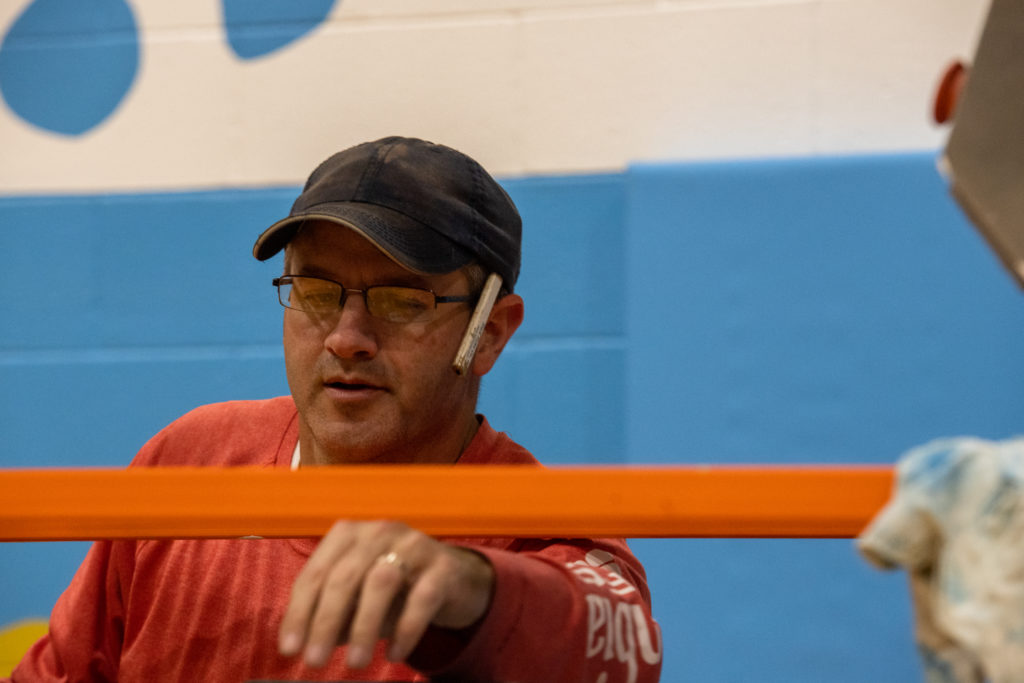
Originally from Belmont County, the Jerusalem-based artist specializes in grand projects, painting murals on barns, at schools and elsewhere.
His inaugural barn sports the Ohio State University logo next to OSU’s mascot, Brutus Buckeye. That feat led to Hagan being hired by the Ohio Bicentennial Commission in 1998 to paint the state’s bicentennial “1803-2003” logo on 88 barns—one in each of Ohio’s counties.
Stephen George, former executive director of the Ohio Bicentennial Commission and current chief strategist and senior advisor to the CEO at Ohio History Connection, has known Hagan since he was a teenager.
With the Ohio Bicentennial Commission, George wanted to build momentum leading up to Ohio’s 200th anniversary. Armed with the bicentennial logo illustrated by David Browning, he needed a way to obtain a steady interest in the historic occasion. After learning of Hagan through a newspaper article, the commission initially had the idea to hire him to paint the logo on just one barn.
Stephen George, former executive director of the Ohio Bicentennial Commission and current chief strategist and senior advisor to the CEO at Ohio History Connection, has known Hagan since he was a teenager.
With the Ohio Bicentennial Commission, George wanted to build momentum leading up to Ohio’s 200th anniversary. Armed with the bicentennial logo illustrated by David Browning, he needed a way to obtain a steady interest in the historic occasion. After learning of Hagan through a newspaper article, the commission initially had the idea to hire him to paint the logo on just one barn.
“We talked to him and he kind of took a chance on us,” George says. “We kind of took a chance on him. That’s how it began. From that one barn, it became such a popular thing that it really spread the word around the state very effectively.”
“We don’t really have, in Ohio, a unifying cultural norm … So, the barn project actually became something like that,” George says. “We very soon said that we would do one in all 88 counties. That really seemed to resonate with people, and it still does.”
According to the commission’s final report, Hagan traveled about 65,000 miles and used roughly 650 gallons of paint throughout the five-year, one-man project.
At 46 years old, Hagan’s barn artistry has evolved into a career with a nationwide portfolio. His work has a way of rejuvenating the surrounding environment, whether it be a high school gym or a wooden barn.
Previously, he held a goal of painting in all 50 states. He does not know if he has the same goal today, having painted in around 22 states so far.
Hagan’s popularity as “The Barn Artist” only grew after finishing the bicentennial barns. When Monroe County wanted to celebrate its bicentennial in 2015 with a quilt barn trail, Hagan was hired.
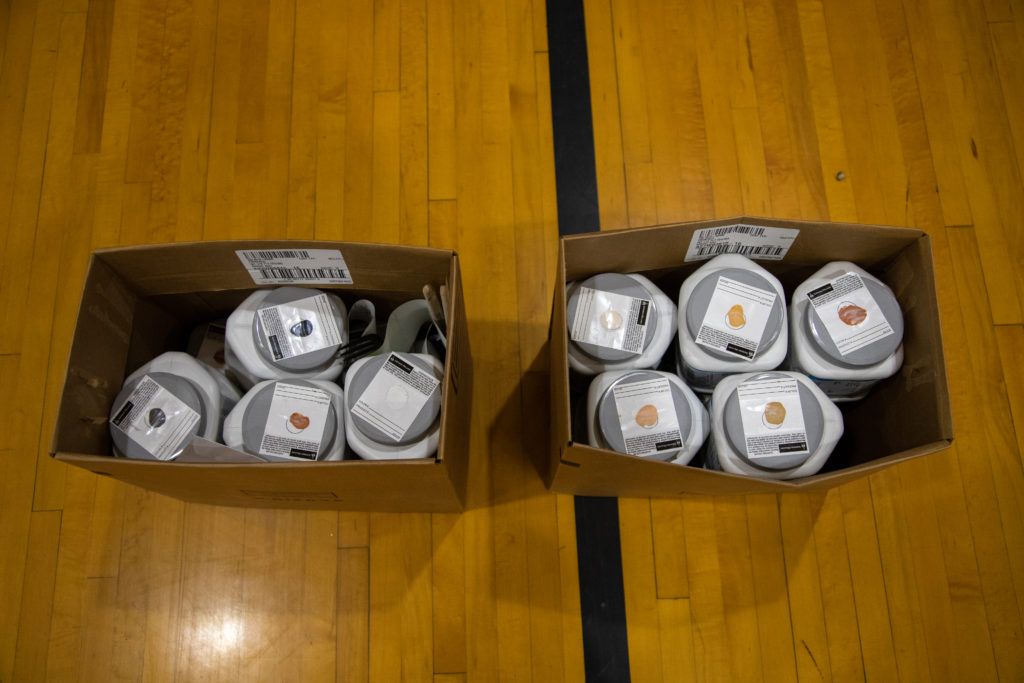
“Just as patchwork quilts once graced the beds of most Monroe County residents, those same designs now adorn 20 century-old wooden barns,” Karen Schaefer, producer of See Ohio First’s audio driving tour says. “Each [barn is] a colorful quilt-work jewel which celebrates the history and culture of this rugged Ohio River landscape.”
Schaefer’s calm voice set to an instrumental tune guides listeners along an educational journey of the Patchwork Jewels of Monroe County, a trail of quilt barns painted by Hagan.
“What the quilt barns offer is an opportunity to tell the story of the community in ways that acknowledge that,” David Merkowitz, director of grants and programs for Ohio Humanities, says. “The story is not a single really important place, but an overall experience of the place.”
Hagan has helped multiple Ohio counties create barn trails.
In September 2022, a work of Hagan’s made its debut in Bellevue. A barn in front of The Bellevue Hospital now displays a bold, black-and-white depiction of a Berkshire-style No. 757 steam locomotive surrounded by the words “Welcome to Bellevue,” “A Historic Railroad Town” and “The Bellevue Hospital.” It is the seventh addition to the Sandusky County Historic Barn Mural Trail.
Hagan figures he completed the Patchwork Jewels Quilt Barns over two years. Then, with a grant from the Ohio Art Council, Ohio Humanities started making audio tours of Ohio’s quilt barns.
David Merkowitz, director of grants and programs for Ohio Humanities notes that in Ohio, there has been a lengthy discussion regarding how to take better advantage of the “heritage tourism assets in the state.”
“What the quilt barns offer is an opportunity to tell the story of the community in ways that acknowledge that,” Merkowitz says. “The story is not a single really important place, but an overall experience of the place.”
Hagan has helped multiple Ohio counties create barn trails.
In September 2022, a new work of Hagan’s made its debut in Bellevue. A barn in front of The Bellevue Hospital now displays a bold, black-and-white depiction of a Berkshire-style No. 757 steam locomotive, surrounded by the words “Welcome to Bellevue,” “A Historic Railroad Town,” and “The Bellevue Hospital.” It is the seventh addition to the Sandusky County Historic Barn Mural Trail.
Sandusky County began its own barn trail in 2017 after Hagan painted a barn mural of former President Rutherford B. Hayes in Fremont for Ohio Turnpike and the Ohio History Connection in 2015.
“We thought, ‘Wow, it’d be so cool if we did more than just one barn and created a trail,’” David Thornbury, marketing director for Sandusky County Visitors Bureau, says.
All the Sandusky County barns and their murals have some significance to the area. Thornbury says the No. 757 steam locomotive on Bellevue’s barn was a famous steam train that ran routes from Bellevue to beyond.
Finding beauty in Ohio’s history
Both residents and passersby enjoy the Sandusky County Barn Mural Trail, and people have traveled across multiple state lines to visit.
Peggy Courtney, executive director for Sandusky County Visitors Bureau, remembers a Californian couple who explained they followed Hagan on Facebook. It was there they learned of Sandusky County’s barn mural trail, and the couple made the trip from California to Ohio, rented a car and drove the path.
“One of the things we wanted to do was make our county look beautiful [and] make our countryside look more appealing,” Thornbury says. “Also, [we wanted] to protect these historic barns that are becoming harder and harder to find.”
Hagan echoes Thornbury’s sentiment.
“One thing about this area, Southeastern Ohio, it can be harder to find the sides of barns that work [for painting],” Hagan says. “A lot of barns are gone now.”
Hagan continued to work with George after the Ohio Bicentennial through Ohio History Connection. George says that, because some of the barns are quite old, Hagan encounters holes, rough surfaces and warped boards. Browning of Browning Design illustrates and designs reference artwork Hagan can bring to life despite it all.
The team will join forces again for a years-long project George says is similar to the Bicentennial Barn project, involving barn paintings of prominent Ohioans. Hagan will also play a big role in Ohio’s celebration of the United States of America’s 250th anniversary.
George says because Hagan’s work is on such a large canvas, the visuals are hard to miss. He thinks many people are surprised to learn about historical changemakers from their local community, and when they become aware, they want others to know, too.
Hagan’s impact
Hagan’s talents have a dual outcome of bringing joy to others and preserving history.
Barns have long been of importance to Ohio, beginning with the state’s agricultural roots. Effective March 2019, the barn became the state’s official historical architectural structure, according to the Ohio Revised Code.
As the number of standing barns in the U.S. dwindle, Hagan not only brings new life to historic buildings, but tells the story of the surrounding land. With art, Hagan ensures Ohio’s history will not be forgotten.
“He’s just a peach of a person. He’s just a very good-natured, sweet guy who is very competent in his craft,” George says. “He’s proud of what he does, and he has every right to be proud of it. I’ve watched him grow in his practice and his artistry for a long time now, and it’s just astounding what he is able to do.”
